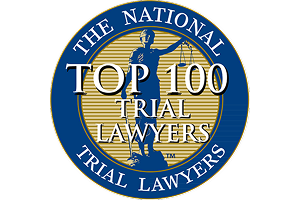San Francisco, California
The first inhabitants of the San Francisco area were the Ohlone people until the expedition of Don Gaspar de Portola arrived from Spain on Nov. 2, 1769. Seven years later, on March 28, 1776, the Spanish established the Presidio of San Francisco. The installation of a military base at the Presidio was followed by the building of a mission, the Mission San Francisco de Asis (Mission Dolores), which was established by the Spanish explorer Juan Bautista de Anza. Once the area gained its independence from Spain in 1821 and became part of Mexico, it was renamed Yerba Buena. During the period of Mexican rule an Englishman, William Richardson, and the alcalde (mayor) of Yerba Buena, Francisco de Haro, laid out a street plan for the town for expanded settlement, and Yerba Buena began to attract American settlers. War broke out between the United States and Mexico in 1846, and Commodore John D. Sloat claimed California for the United States on July 7, 1846. Within two days, Captain John B. Montgomery arrived to claim Yerba Buena for the United States. After the conclusion of the Mexican-American War in 1848 the United States gained control of Yerba Buena and renamed it San Francisco on Jan. 30, 1849.
The flow of settlers into San Francisco became a flood during the Gold Rush (1848-1855), when thousands of people arrived in the city, hoping to become rich. The population of San Francisco jumped from 1,000 in 1848 to 25,000 by the end of the following year. In their haste to reach the gold fields in California, many crews on arriving ships abandoned their vessels in San Francisco’s harbor. California was granted statehood in 1850, and the U.S. military built Fort Point at the Golden Gate as well as a fort on Alcatraz Island to butress the defenses of San Francisco Bay. Another major nearby discovery of precious metals, this time abundant silver deposits at the Comstock Lode in 1859, spurred additional rapid population growth in San Francisco. With so many fortune seekers in the city, lawlessness became rife, and the Barbary Coast section of San Francisco became notorious as a hotbed for criminals, gambling and prostitution.
The Gold Rush era generated a great deal of wealth and entrepreneurial growth in San Francisco, with the founding of Wells Fargo in 1852 and the Bank of California 1864 major milestones in the development of the city’s financial sector. Notable additions to the city’s business community occurred when Levi Strauss opened a dry goods store and Domingo Ghirardelli started to manufacture chocolate. The city became a major center of trade after the Port of San Francisco was established, and especially so after the completion of the Pacific Railroad, or Transcontinental Railroad, which afforded the city an important overload link to the U.S. rail system in the East. The Chinese railroad workers who immigrated to San Francisco and helped build the Transcontinental Railroad were one example of the many ethnic groups who flocked to the city from around the world. Cable cars first appeared on the transportation grid of San Francisco in 1873 with the introduction of service on Clay Street, and the city’s iconic Victorian houses began to dominate the city’s architectural landscape. Soon plans for a major public open space, Golden Gate Park, were developed, and San Franciscans built many churches, schools, theaters and other civic landmarks. The Presidio had become the most important U.S. military installation on the West Coast by the late 1800s, and San Francisco’s population reached 300,000 in 1890, making it the eighth largest city in the United States that year.
Befitting a major city, San Francisco in the early 1900s was known for its stately hotels, opulent mansions on Nob Hill, and a bustling arts scene, including an important opera company. But on April 18, 1906, San Francisco’s grandeur and flamboyant style were shaken when a severe earthquake hit the city. Buildings tumbled and gas lines ruptured, igniting fires that raged across the city for several days. Because water mains were out of service, the Presidio Artillery Corps attempted to contain the conflagration by dynamiting several blocks of structures in order to create firebreaks. More than three-fourths of the city lay in ruins, including most of the downtown area. Reports at the time placed the number of people who lost their lives due to the temblor and fire at 498, but modern estimates have substantially raised that estimate to several thousand. More than half of San Francisco’s population of 400,000 were left homeless, with many people temporarily residing in tent villages in Golden Gate Park, the Presidio, on beaches and elsewhere, and many others permanently decamping to the East Bay.
The process of rebuilding the city was as rapid as it was widespread. Amadeo Giannini’s Bank of Italy, which later became the Bank of America, extended loans to many San Franciscans who needed financial help to recover from the disaster. The earthquake and fire spurred development of western neighborhoods in San Francisco, and the city celebrated its renaissance at the Panama-Pacific International Exposition in 1915. It was during this period of recovery that San Franciscans built some of the most important elements of the city’s infrastructure. Mayor James Rolph, who later became governor of California, hired a civil engineer to be chief engineer for the city who was named Michael O’Shaughnessy, and the later supervised construction of the Twin Peaks Reservoir, Stockton Street Tunnel, Twin Peaks Tunnel, San Francisco Municipal Railway, Auxiliary Water Supply and a new sewer system. An abundant water supply from the O’Shaughnessy Dam, Hetch Hetchy Reservoir and Hetch Hetchy Aqueduct played a key role in San Francisco’s development. San Francisco solidified its position as the financial capital of the western United States, and during the stock market crash of 1929 not a single San Francisco-based bank failed.
During World War II, shipbuilding became important in San Francisco, particularly with the opening of the Hunters Point Naval Shipyard, and many people gravitated to the city to work at the shipyard. Also during the war, Fort Mason became a major port of embarkation for service members who were shipping out to participate in the U.S. Pacific Theater of Operations. At the conclusion of hostilities in 1945, the United Nations Charter was drafted and signed in the city, and in 1951, the Treaty of San Francisco formally ended the war with Japan. In the immediate postwar period, many military personnel who returned from overseas decided to settle in San Francisco.
Between the 1950s and 1960s, San Franciscans saw a series of redevelopment and construction projects begun in their city, as freeways, urban planning projects and high-rise buildings were built. In the 1950s, 1960s and 1970s, San Francisco became a major magnet for America’s counterculture: hippies flocked to the Haight-Ashbury neighborhood, Jazz musicians became prominent in the Fillmore neighborhood, the gay rights movement began in the Castro district, and the Beat Generation found a home in the North Beach area. Soon, additional iconic buildings would dot the urban landscape of San Francisco, including the Transamerica Pyramid, which was completed in 1972, and another wave of high-rise development ensued in the city through the 1980s.
On Oct. 17, 1989, the devastating Loma Prieta earthquake struck San Francisco and damaged many buildings in the Marina district and the South of Market area. That temblor precipitated the demolition of the damaged Embarcadero Freeway as well as much of debilitated Central Freeway, a development that ultimately permitted the city to reclaim its historic waterfront and led to the revitalization of the Hayes Valley neighborhood. The city recovered and rebuilt itself by the beginning of the next decade. The 1990s saw a period of great prosperity for the San Francisco Bay Area and was notable for the dot-com boom, as many computer startup companies, entrepreneurs and computer developers established themselves in San Francisco. By 2001 economic growth came to halt and many companies closed, but San Francisco has remained a hub for technology and entrepreneurship. San Francisco’s tourism industry remains a major component of the economy for one of the most picturesque cities in the world. The U.S. Census Bureau reported upon completion of the 2010 census that San Francisco had a population of 805,235, and the agency estimated that the city’s population reached 832,442 by the middle of 2013.
the Brod Law Firm takes tremendous pride in its history of providing outstanding legal representation to the people of San Francisco. The firm’s focus is helping our clients, who consist of individuals and small businesses, not insurance companies or large corporations.
We are San Francisco injury attorneys, and we handle personal injury cases on a contingency-fee basis. This means that unless there is a recovery on your behalf, no legal fees are owed. We are San Francisco business attorneys, and in litigation, the financial interests of a client are often overlooked by some law firms. At the Brod Law Firm, the legal and financial interests of our clients is the No. 1 priority.
Our office is located at 100 Pine St #1250., which is south of Market Street and east of Second Street and can be accessed by turning onto Anthony Street from Mission Street and proceeding to the brick building at the intersection of Anthony and Jessie streets.







